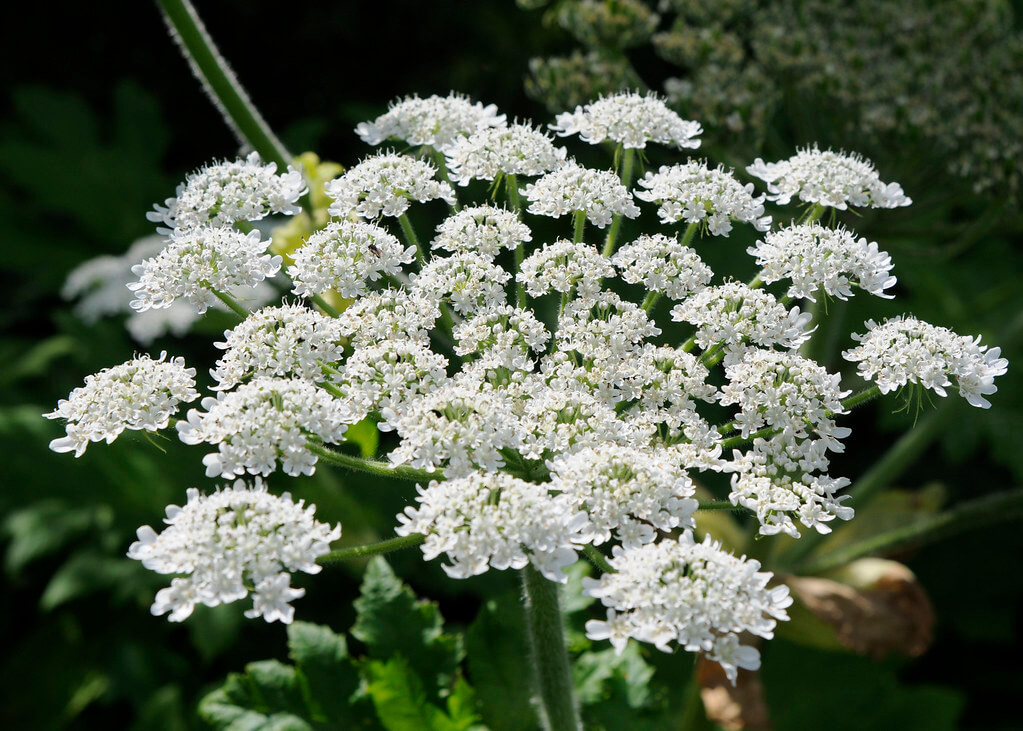Australian Plant Census (2011) available at: Vascular Plants APNI (biodiversity.org.au).
Australia's Virtual Herbarium (AVH) (2007). Council of Heads of Australian Herbaria (CHAH). Available at: Home - AVH (chah.org.au)
Davies, E. (2008). The Environment Agency, United Kingdom.
European and Mediterranean Plant Protection Organization (EPPO) (2006). Data sheet on Invasive Plants Heracleum mantegazzianum.
Harden, G.J. (2007). Conium maculatum L. In: PlantNET - The Plant Information Network System of Botanic Gardens Trust, Sydney, Australia (Version 2.0). Available at: PlantNET - FloraOnline (nsw.gov.au)
Hattendorf, J., Hansen, S. O., Reznik, S. Y., & Nentwig, W. (2006). Herbivore Impact Versus Host Size Preference: Endophagous Insects on Heracleum mantegazzianum in its Native Range. Environmental Entomology 35(4):1013-1020.
National Biological Information Infrastructure (NBII) & IUCN/SSC Invasive Species Specialist Group (ISSG) (2005). Heracleum mantegazzianum. Available at: GISD (iucngisd.org)
Nielsen, C., Ravn, H.P., Nentwig, W. & Wade, M. (eds.), 2005. The Giant Hogweed Best Practice Manual. Guidelines for the management and control of an invasive weed in Europe. Forest & Landscape Denmark, Hoersholm.
Spafford Jacob, H., Randall, R. & Lloyd, S. (2004). Front door wide open to weeds. An examination of the weed species permitted for import without risk assessment. WWF Australia.
USDA Forest Service (undated). Forest Health Staff, Newtown Square, PA. Weed of the Week. Giant Hogweed Heracleum mantegazzianum.
Victorian Resources Online (2007). Department of Primary Industries Victoria. Giant Hogweed (Heracleum mantegazzianum). Available at: Giant hogweed (Heracleum mantegazzianum) | VRO | Agriculture Victoria
Andersen, U. V. & Calov, B. (1996). Long-term effects of sheep grazing on giant hogweed (Heracleum mantegazzianum). In: Hydrobiologia [Management and ecology of freshwater plants. Proceedings of the 9th international symposium on aquatic weeds, European Weed Research Society, Dublin, Irish Republic, 1994.], 340 277-284.
CABI, (2021). Heracleum mantegazzianum. In: Invasive Species Compendium. Wallingford, UK: CAB International. Available at: Heracleum mantegazzianum (giant hogweed) | CABI Compendium (cabidigitallibrary.org)
eFloraSA (2021). Electronic Flora of South Australia. State Herbarium of South Australia: Adelaide. Available at: Electronic Flora of South Australia
Lucey, J. (1994). Records of the giant hogweed, Heracleum mantegazzianum along southern Irish rivers and streams with a revised distribution map for the region. Bulletin of the Irish Biogeographical Society, 17(1):2-6; 7.
Lundstrom, H. (1984). Giant hogweed, Heracleum mantegazzianum, a threat to the Swedish countryside. Weeds and weed control. 25th Swedish Weed Conference, Uppsala 2nd February 1984. Vol. 1. Reports. Sveriges Lantbruksuniversitet Uppsala Sweden, 191-200.
Tasmania DPIPWE (2019). Giant Hogweed (Heracleum mantegazzianum). Department of Primary Industries and Water (DPIPWE) Tasmania. Available at: Giant Hogweed | Department of Natural Resources and Environment Tasmania (nre.tas.gov.au)
Tiley, G. E. D., Dodd, F. S. & Wade, P. M. (1996). Heracleum mantegazzianum. Journal of Ecology (Oxford). 84 (2), 297-319.
VicFlora (2016). Flora of Victoria, Royal Botanic Gardens Victoria. Available at: VicFlora: Home page (rbg.vic.gov.au)



















